What is procedural pain?
“Procedural pain” means pain caused by procedures. Procedures are treatments or tests to make a diagnosis or treat a disease or injury. Vaccinations, injections and blood draws are common examples of treatments or tests where needle pokes may cause “procedural pain”.
Procedural pain is a type of acute pain: The pain results from the body sensing injury from a procedure such as a needle poke. The injury will usually heal quickly, and the pain will go away.
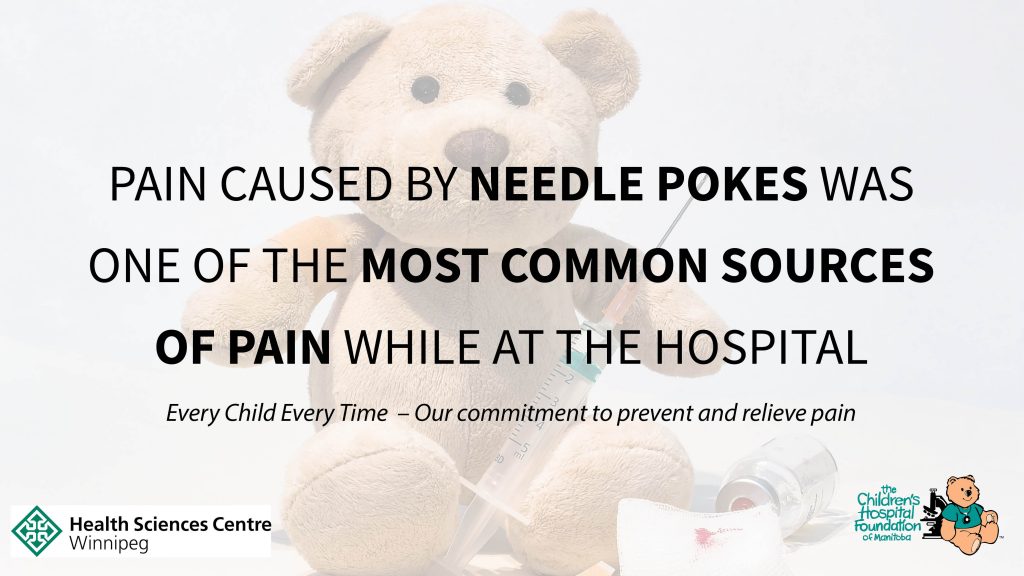
Why should we prevent procedural pain?
Procedural pain such as needle pain is unnecessary pain and may even cause harm: Repeated exposures to needle pain may change how the body deals with pain, and a person can become more sensitive to pain. As a result, for example, a child may develop fear of needles, other procedures or even of doctor’s visits in general. This fear may last into adulthood and may result in avoidance of healthcare.
Preventing needle pain and other procedural pain can decrease the risk of complications, and can even increase survival of severe illnesses, particularly in newborn babies.
We are very fortunate today that we know how we can prevent pain from procedures such as needle pokes.
How can we prevent needle pain?
Today, we know: numbing cream, sugar water, comfort positioning and distraction make a difference so that needles don’t have to hurt anymore.
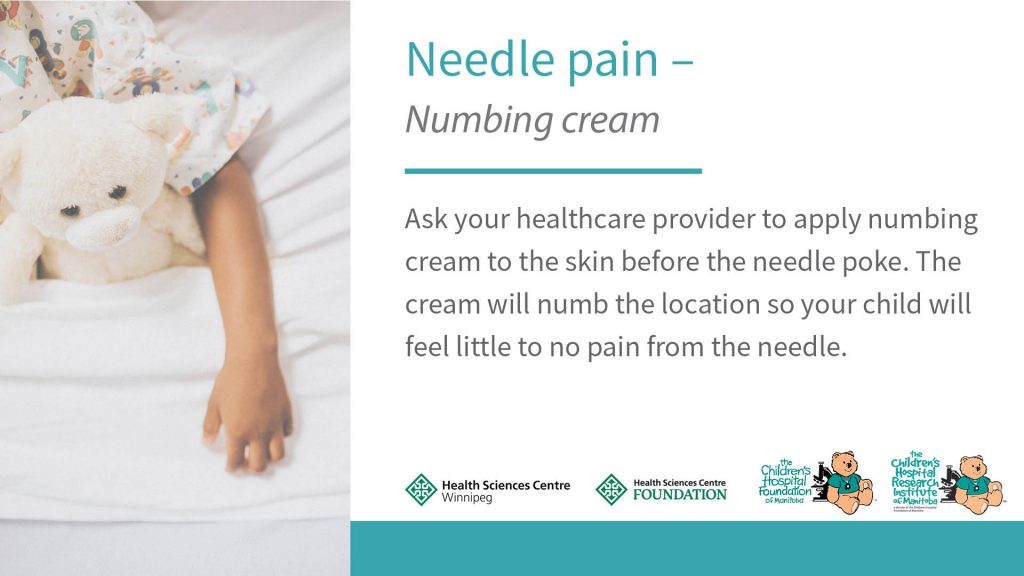
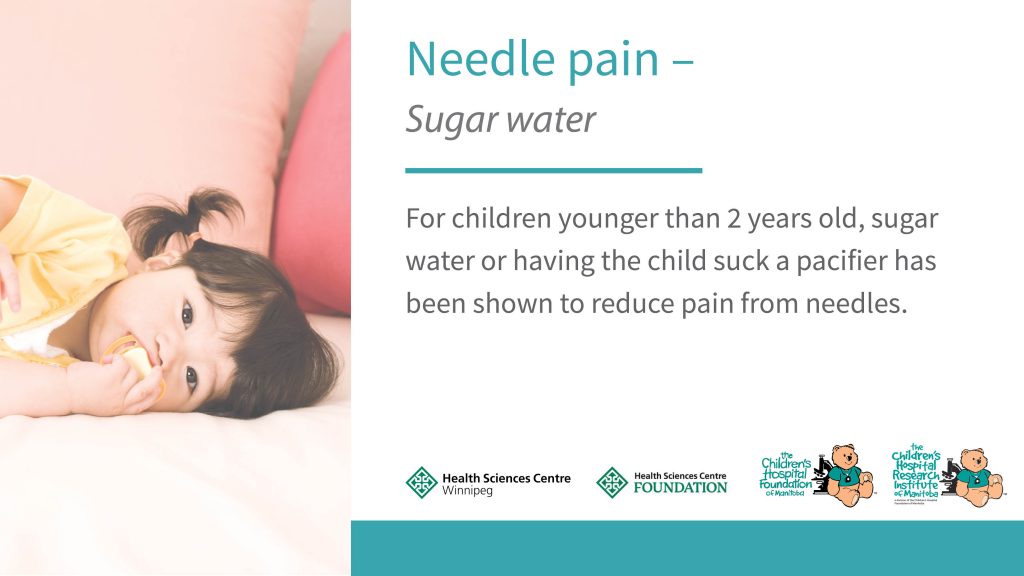
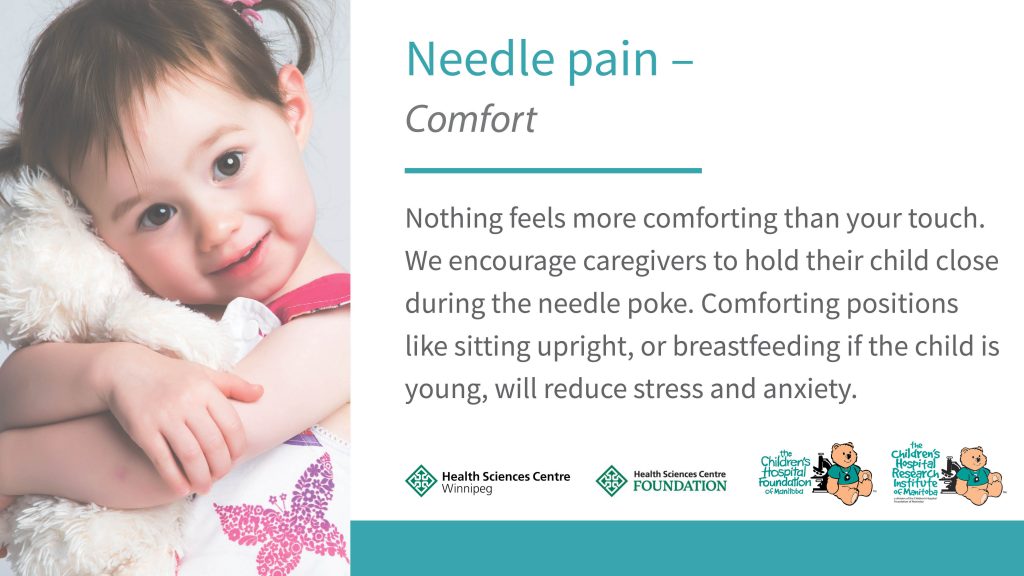
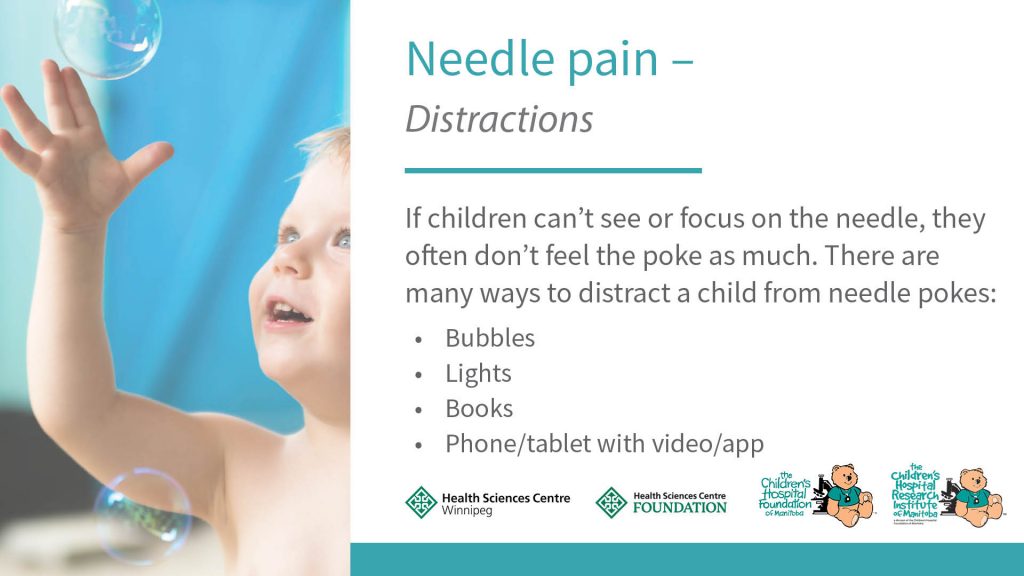
Learn more about how to prevent needle pain by clicking on the image below:
Also available as a printable PDF:
